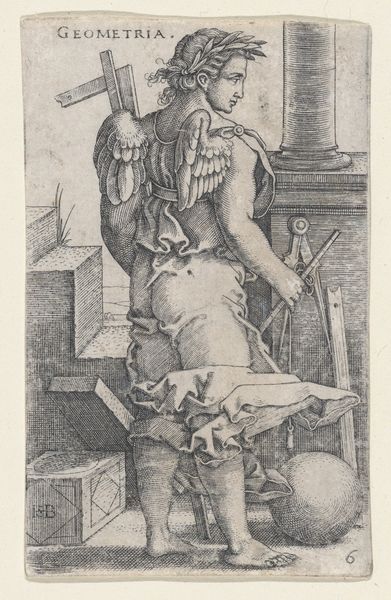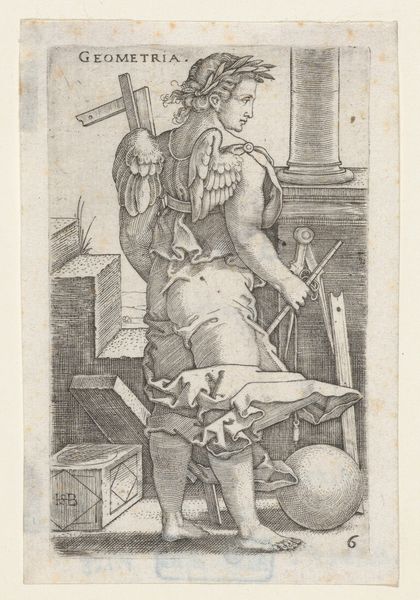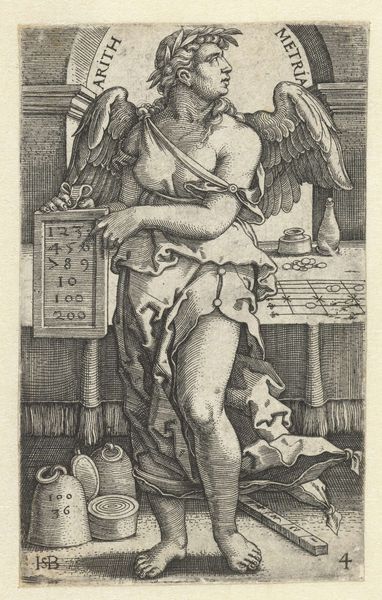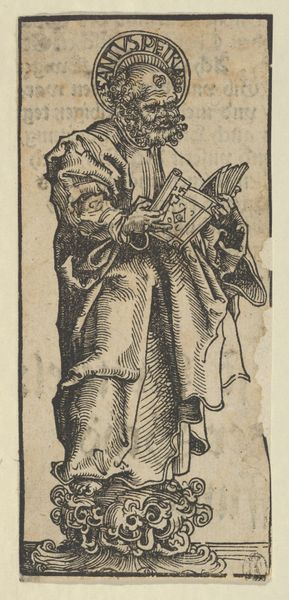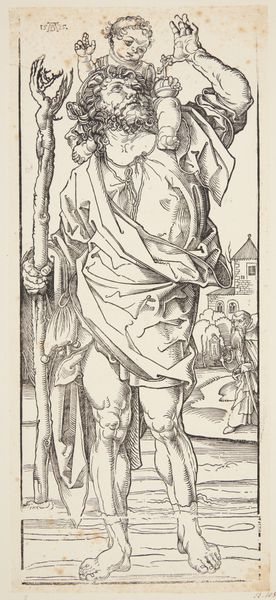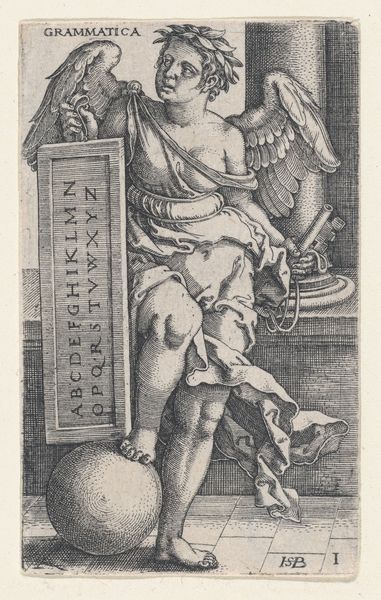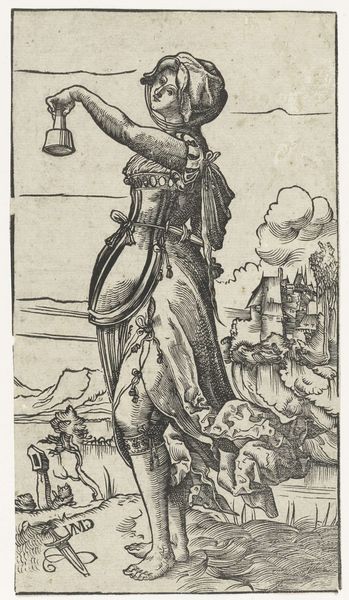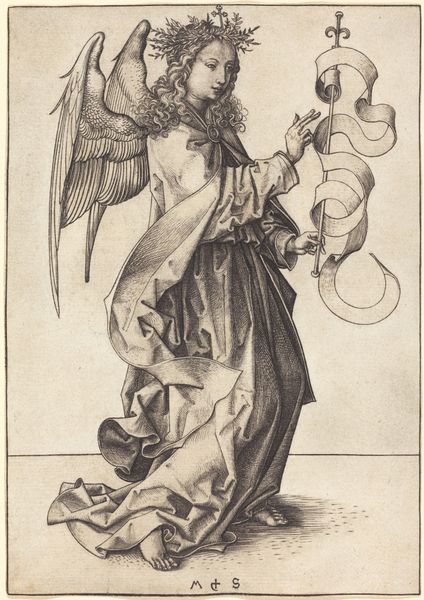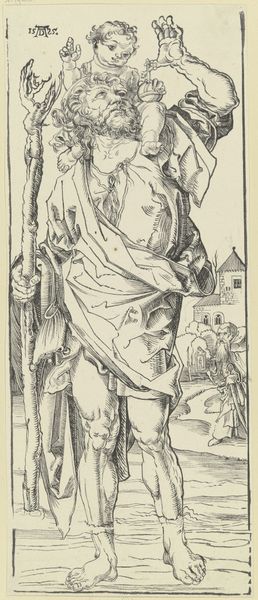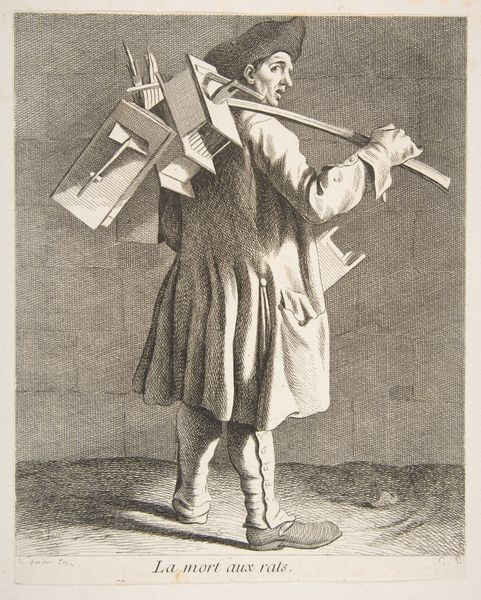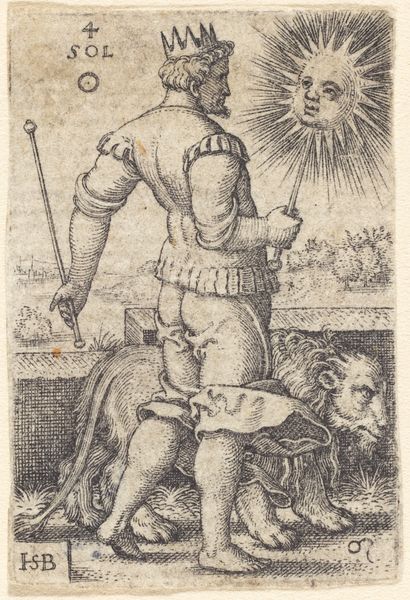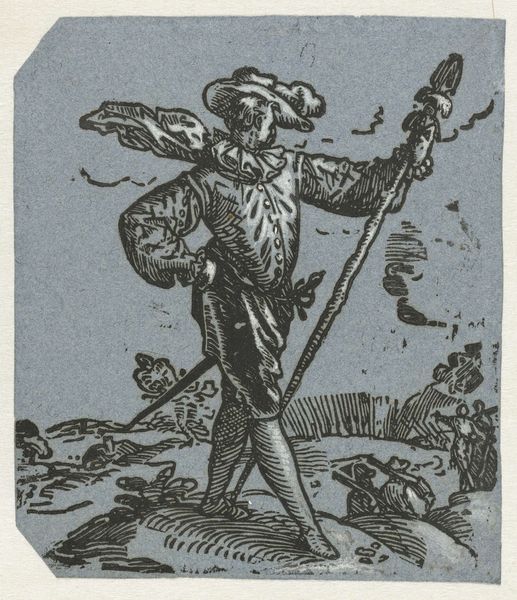
print, engraving
#
allegory
# print
#
old engraving style
#
figuration
#
form
#
geometric
#
line
#
history-painting
#
northern-renaissance
#
engraving
Dimensions: height 89 mm, width 55 mm
Copyright: Rijks Museum: Open Domain
Curator: This is "Meetkunde (Geometria)," an engraving by Sebald Beham, likely created between 1510 and 1550. It's currently housed in the Rijksmuseum. Editor: Immediately, I'm struck by its controlled, almost stoic atmosphere. The precision of line contrasts with the flowing drapery. It evokes a sense of idealized masculinity anchored by the weight of geometric forms. Curator: The figure represents the allegory of Geometry. We see this embodied in the attributes surrounding her – or perhaps him; the figure is somewhat androgynous. Note the set of compasses and the square. And there is a sphere in the lower right corner. All objects used in geometric practices. Editor: Yes, and positioned in this way, they feel deeply symbolic. Geometry, often associated with rationality and order, has historically excluded women and other marginalized genders, reinforcing a power dynamic embedded within these systems of knowledge production. Notice also how geometry allowed the control and construction of space for those in power at that time. Curator: Interesting point. The figure's contrapposto pose allows Beham to display a sophisticated understanding of human anatomy within the restrictive medium of engraving. Observe the details in the face, wings and the modulation created solely by varying the density of hatched lines. This shows clear mastery of technique. Editor: Looking closely, one cannot overlook how Beham has adopted the language of allegory to portray broader ideas, that not only includes the construction of knowledge and beauty but also reinforces existing social orders by giving those who participate in such actions the authority of angels and of God. Curator: In the end, it serves as an interesting, meticulously crafted example of early engraving techniques used to materialize abstract concepts. Editor: And perhaps to also reveal what has remained unsaid for too long within systems of thought and creation that seek to define and build worlds.
Comments
No comments
Be the first to comment and join the conversation on the ultimate creative platform.
